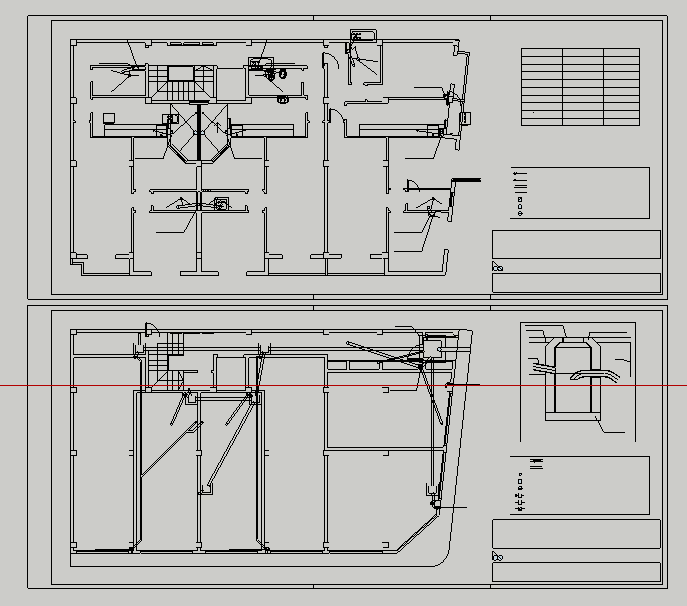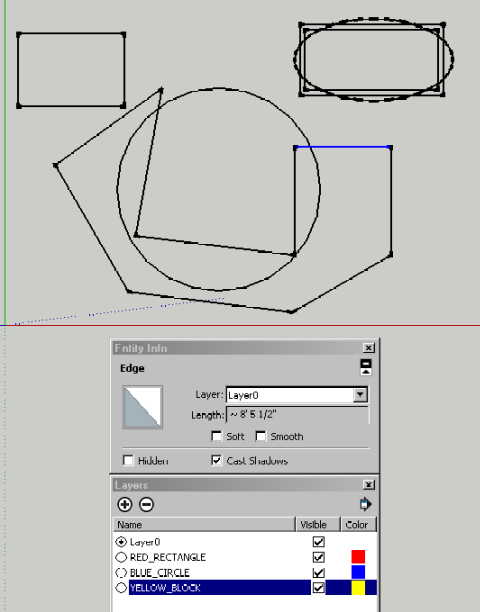[Plugin] Dxf_In v2.2 20110517 Dxf2Skp
-
Honoluludesktop: thank you very much for this plugin
one thing though, i tested on a file and i saw that the it doesn't import the text intro SU.
could you adjust that please, also if it is possible to add the possibility to maintain the Cad Layers on SU, after the import.
thanks a tonne! -
Hi Alex, Go here for a plugin to import text separately into your SketchUp model. Can you post the dxf file so that I can work on layers?
-
here is the pdf of what should appear in SU , but only in CAD, as DraftSight, which is new and free sees :
small-victoria_cuerpo_bello.pdf
victoria_cuerpo_bello.pdf -
i give you the files that i have to work with.
the big one is the one i need, but since is so big, and take a lot of time to import, i made another(smaller) with only a section of the model, so can take a look rapidlyhere is the link from where you can access them: http://dl.transfer.ro/transfer_ro-24mar-5c4a282f1f55.zip
small part-VICTORIA_CUERPO_BELLO.dxf
VICTORIA_CUERPO_BELLO.dxfnotice! i didn't explode the model, so they can import badly with lacking of details. I don't find where i put the exploded ones. If you need them too, tell me, and i will upload them also.
and by the way the import_text makes SU crashing when i want to import the file
 that's why i'm asking
that's why i'm asking -
Got it, will get back to you after I have a chance to look at it. Good job, cutting the size down.
-
Alex, Test this version in regards to layers. I see that there are transformation problems with blocks that I will also have to fix.
 In addition, Dxf_In currently doesn't support nested blocks. Read the help files; also set the defaults dimensions to your preference.my_dxf_In_v1.25.rbLet me know if the layers are OK so that I can post the plugin for others.
In addition, Dxf_In currently doesn't support nested blocks. Read the help files; also set the defaults dimensions to your preference.my_dxf_In_v1.25.rbLet me know if the layers are OK so that I can post the plugin for others. -
i have made another file, much simple one.
0 (contains a polyline)
blue circle
red rectangle
yellow BlockThough layer system now works with your new plugin, but is not accurate: i ,mean the red rectangle is placed on Layer0(of SU default), but it should appear on a different one: that is Red Rectangle not to be placed on Layer0(defaultSUlayer).
(bytheway: if i hide Layer0-everything dissapears- this is strange because on layer Red Rectangle should be only a rectangle, and SU for some reason puts the rectangle on Layer0 with also everything!! strange, you can see that is no Red Rectangle layer in SU, after importing the file)here's the file, please check it out.
testlayers.dxf -
it would be best to make possible to add the layers imported into Su, on different layers than SU's layers, cause currently it puts some geometry on Layer0 of SU, which is not good at all.
-
the rectangle lacks an edge for some reason by the way, as seen here:
-
Also: Blender 2.49 has a very powerful DXF importer. I have tested it and installed everything includin text blocks all correct , without an error. Single thing that is not working are the layers. Unfortunately blender in not as quick and simple as SU

I wonder if you could take a look into how that Importer in made, so you could adapt it to SU.
-
@alexdobras said:
it would be best to make possible to add the layers imported into Su, on different layers than SU's layers, cause currently it puts some geometry on Layer0 of SU, which is not good at all.
SketchUp layers are unlike those in other Cad applications. I think that the view layer is correct. If you elect to group the import at the end of running the application, the group will be placed on "layer0", and hiding/unhiding layers behaves as you see it. If you do not group the import, it should work in a more conventional manner. I will look at the problem with placing the entities on the wrong layer.
-
Alex, good news is "layer0" is "RED_RECTANGLE" so the problem is fixable. Bad news, the missing entities may be "unsupported" by Dxf_In. Sorry, but the math for those entities
may be(or not) beyond me. I will take a look.Is the attached image the one that you are looking for?
 If not tell me what is wrong? The line that intersects the circle is on "layer0". I suspect that is wrong. Can you tell me what layer it's on? Perhaps layer "0".
If not tell me what is wrong? The line that intersects the circle is on "layer0". I suspect that is wrong. Can you tell me what layer it's on? Perhaps layer "0". -
@honoluludesktop said:
Alex, good news is "layer0" is "RED_RECTANGLE" so the problem is fixable. Bad news, the missing entities may be "unsupported" by Dxf_In. Sorry, but the math for those entities
may be(or not) beyond me. I will take a look.Is the attached image the one that you are looking for?[attachment=0:fq5clw9c]<!-- ia0 -->Temp00.png<!-- ia0 -->[/attachment:fq5clw9c]If not tell me what is wrong? The line that intersects the circle is on "layer0". I suspect that is wrong. Can you tell me what layer it's on? Perhaps layer "0".
it is almost good
the line that intersects the circle is on layer named "0" on CAD, but i see that is on "Layer0" of Sketchup. that is bad, because SU should create the later named "0", so the dxf imported should pe placed on totally different layers than that existing ones.also: how could you import the dxf and get the entire rectangle, and almost the Block completely imported??
-
there should be 5 layers:
layer0
0
red rectangle
yellow Block
Blue circle -
In a DWG/DXF import the CAD layer '0' shouldbecomes= SKP layer 'Layer0' [nil]
Other layers should be named to suit...
-
here are the layers in SU:
please notice that there is Layer0 and 0
-
here is the layout in DraftSight :
notice that the name "red rectangle" disappears from the layer tab in SU.
i don't know what you did Honoluludesktop, that you got the picture earlier showed.
and by the way, how did you get all the lines importing accurately ? -
Looks like you got another post in while I was writing the other.>_< The accurate image is based another application that I use to check my work. I placed the SU layer window over it in order that you can ID the layers.
-
Yes, in my case, "Red_Rectangle" is missing. While I am moving ahead on this, I would like to get the opinion of those that are more experienced then myself. Bottom line is that the app. should conform to Acad, GCD/4D (the reason I wrote this plugin), and SU specifications.
Btw, Dxf_In currently doesn't do splines, ellipses, or polyface entities. Ellipsis can be added in the future, but polyface entities, and splines are outside of my comprehension of their computer math algorithms.
-
@honoluludesktop said:
Looks like you got another post in while I was writing the other.>_< The accurate image is based another application that I use to check my work. I placed the SU layer window over it in order that you can ID the layers.
but how did you get that accurate importing? i see all the lines in your SU
Advertisement







